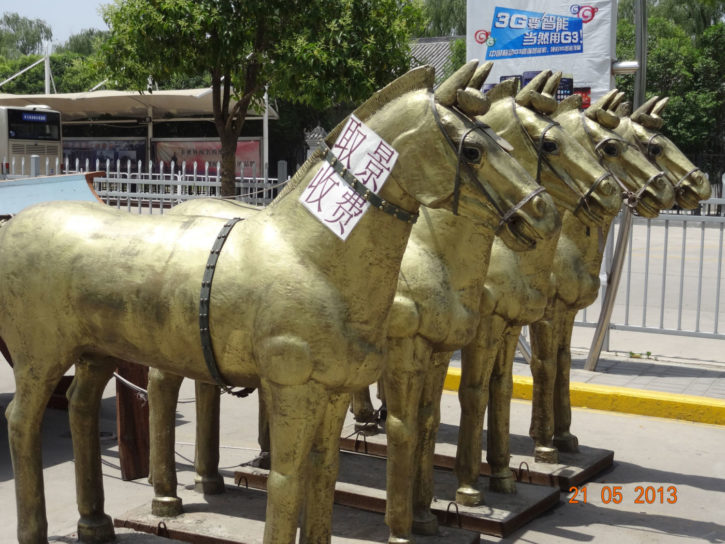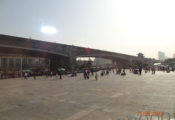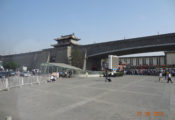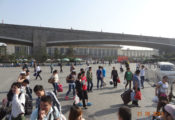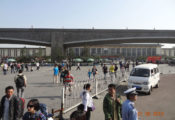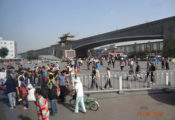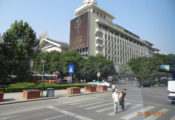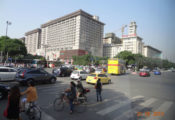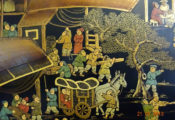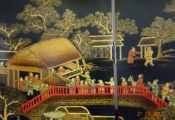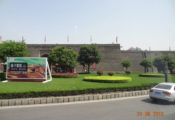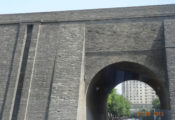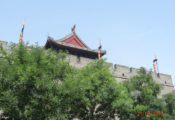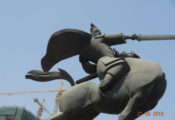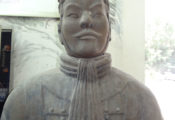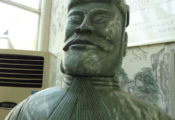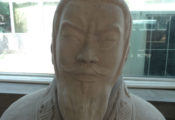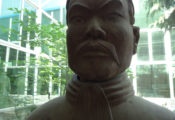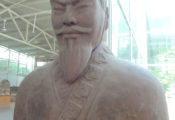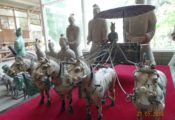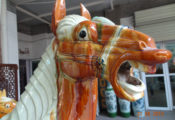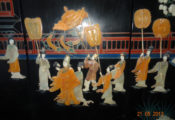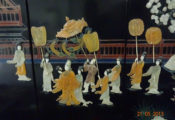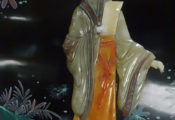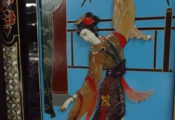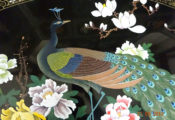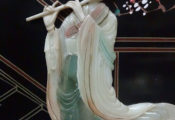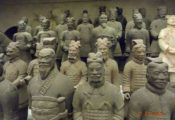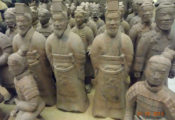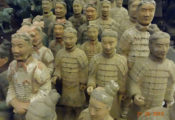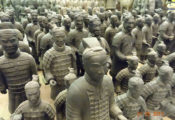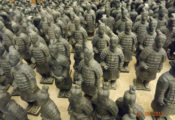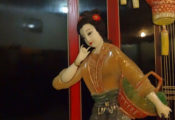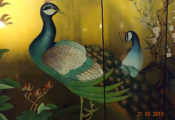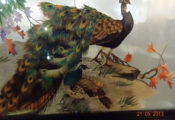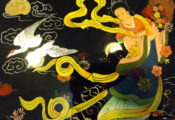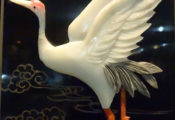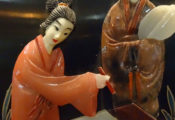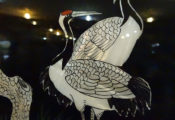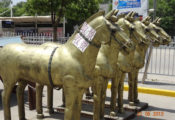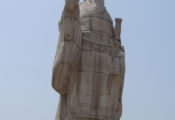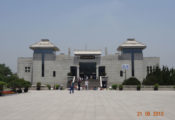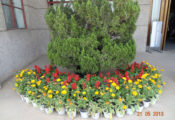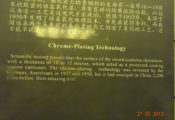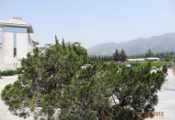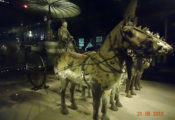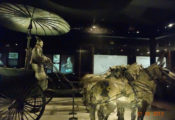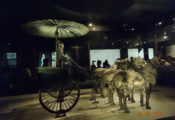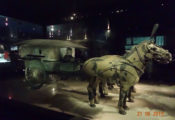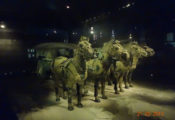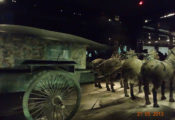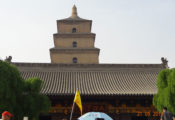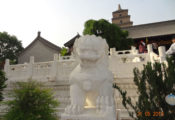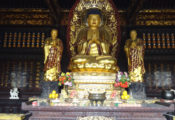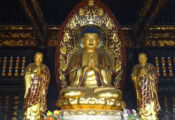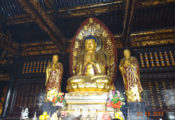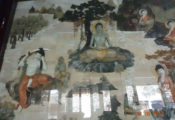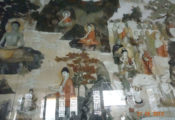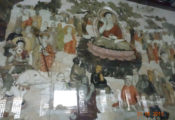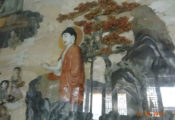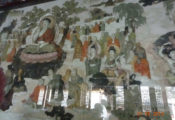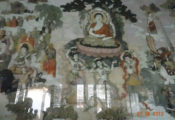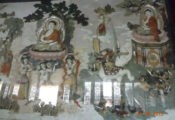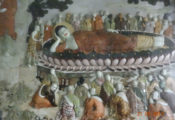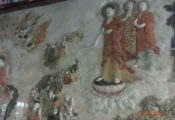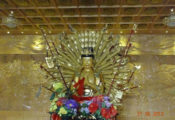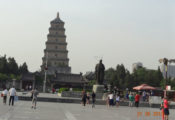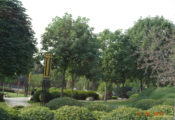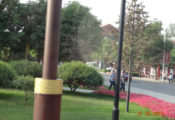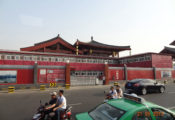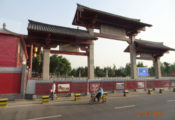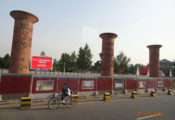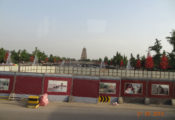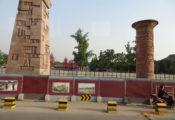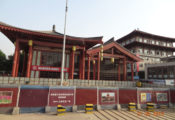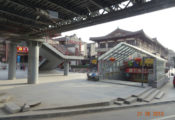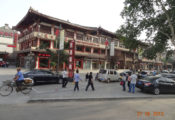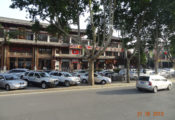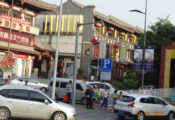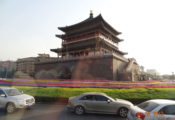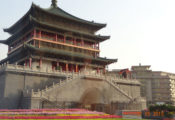21-05-2013
The Terracotta Warriors
Located in three pits near the city of Xi’an in China’s Shaanxi province, the world famous Terracotta Warriors at the tomb of the First Emperor of China during (259-210 B.C.E.) who conquered much in this life, but his purpose was even greater, he sought to conquer death. In order to achieve immortality, he built himself a tomb—a vast underground city guarded by a life-size terracotta army including warriors, infantrymen, horses, chariots and all their attendant armor and weaponry. The Terracotta Army is a collection of terracotta sculptures depicting the armies of Qin Shi Huang, the first Emperor of China. It is a form of funerary art buried with the emperor in 210–209 BCE with the purpose of protecting the emperor in his afterlife. In March 1974, a group of peasants digging a well in drought-parched Shaanxi province in northwest China unearthed fragments of a clay figure—the first evidence of what would turn out to be one of the greatest archaeological discoveries of modern times. Near the unexcavated tomb of Qin Shi Huang—who had proclaimed himself first emperor of China in 221 B.C.—lay an extraordinary underground treasure: an entire army of life-size terra cotta soldiers and horses, interred for more than 2,000 years.
Big Wild Goose Pagoda
A holy shrine of Buddhists, The Big Wild Goose Pagoda is located in the southern suburb of Xi’an City. Giant Wild Goose Pagoda is rated as a National Key Cultural Relic Preserve as well as an Tourist Attraction. In addition, it was added to the World Heritage List on June 22, 2014, together with other sites along the ancient
Silkroad. This whole scenic area include the Big Wild Goose Pagoda, the Da Ci’en Temple, and the various squares, gardens and other facilities around Giant Wild Goose Pagoda.
Originally built in 652 during the reign of Emperor Gaozong of the Tang Dynasty (618-907), Giant Wild Goose Pagoda functioned to collect Buddhist materials that were taken from India by the hierarch Xuanzang.Xuanzang started off from Chang’an (the ancient Xi’an), along the Silk Road and through deserts, finally arriving in India, the cradle of Buddhism. Enduring 17 years and traversing 100 countries, he obtained Buddha figures, 657 kinds of sutras, and several Buddha relics. Having gotten the permission of Emperor Gaozong (628-683), Xuanzang, as the first abbot of Da Ci’en Temple, supervised the building of a pagoda inside it. With the support of royalty, he asked 50 hierarchs into the temple to translate Sanskrit in sutras into Chinese, totaling 1,335 volumes, which heralded a new era in the history of translation. Based on the journey to India, he also wrote a book entitled ‘Pilgrimage to the West’ in the Tang Dynasty, to which scholars attached great importance.
As for the reason why it is called Giant Wild Goose Pagoda, there is a legend. According to ancient stories of Buddhists, there were two branches, for one of which eating meat was not a taboo. One day, they couldn’t find meat to buy. Upon seeing a group of big wild geese flying by, a monk said to himself: ‘Today we have no meat. I hope the merciful Bodhisattva will give us some.’ At that very moment, the leading wild goose broke its wings and fell to the ground. All the monks were startled and believed that Bodhisattva showed his spirit to order them to be more pious. They established a pagoda where the wild goose fell and stopped eating meat from that time. Hence its name Giant Wild Goose Pagoda.

